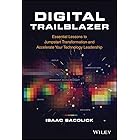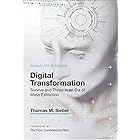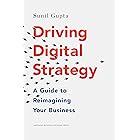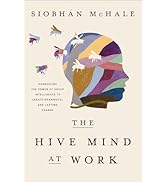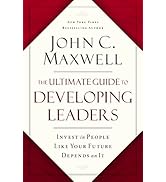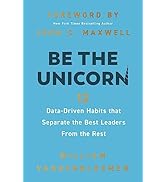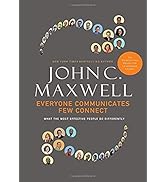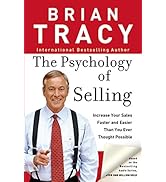| Kindle Price: | $19.99 |
| Sold by: | HarperCollins Publishing Price set by seller. |
Your Memberships & Subscriptions

Download the free Kindle app and start reading Kindle books instantly on your smartphone, tablet, or computer - no Kindle device required.
Read instantly on your browser with Kindle for Web.
Using your mobile phone camera - scan the code below and download the Kindle app.



 Audible sample
Audible sample Driving Digital: The Leader's Guide to Business Transformation Through Technology Kindle Edition
Every organization makes plans for updating products, technologies, and business processes. But that’s not enough anymore for the twenty-first-century company. The race is now on for everyone to become a digital enterprise. For those individuals who have been charged with leading their company’s technology-driven change, the pressure is intense while the correct path forward unclear. Help has arrived! In Driving Digital, author Isaac Sacolick shares the lessons he’s learned over the years as he has successfully spearheaded multiple transformations and helped shape digital-business best practices. Readers no longer have to blindly trek through the mine field of their company’s digital transformation. In this thoroughly researched one-stop manual, learn how to: • Formulate a digital strategy • Transform business and IT practices • Align development and operations • Drive culture change • Bolster digital talent • Capture and track ROI • Develop innovative digital practices • Pilot emerging technologies • And more! Your company cannot avoid the digital disruption heading its way. The choice is yours: Will this mean the beginning of the end for your business, or will your digital practices be what catapults you into next-level success?
- LanguageEnglish
- PublisherAMACOM
- Publication dateAugust 24, 2017
- File size1202 KB
Customers who bought this item also bought
From the brand

Scroll right for more great reads.
-

HarperCollins Leadership publishes content from leaders who redefine or expand what a reader previously thought possible.
Our authors provide unique inspiration and experiences to those who seek to learn, make a difference, and find their own version of success.
-
-
-
-
-
-
Editorial Reviews
From the Back Cover
These are demanding days for technology and digital leaders. Even their best efforts to keep up with rapid change are rarely enough. Deploying mobile applications, developing digital marketing strategies, moving applications to the cloud, leveraging Big Data—these major initiatives just meet basic expectations. Business leaders today are challenged to grow digital businesses, advance customer experiences, and leverage analytics to drive competitive advantage.
But for technologists with vision, fortitude, and a roadmap for steering the enterprise through digital transformation, these are exciting times too. Driving Digital helps you change the culture and develop digital practices, triggering growth through digital channels, gaining hyperefficiency through automation, creating digitally immersive experiences for customers, and fending off threats from competitors.
Written by an experienced CIO with multiple transformation efforts under his belt, and packed with insights, guidelines, and stories from the frontlines, the book explains how to:
• Turn a traditional IT department into an agile operation skilled at using and integrating new digital platforms
• Shift people away from legacy practices that add unnecessary costs and complexity
• Develop digital products starting with capturing ideas from employees, understanding customer needs, and developing go-to-market plans
• Enable “citizen data scientists” and promote a data-driven organization
• Establish strategic platforms and enable emerging technologies such as blockchain, internet of things (IoT), and artificial intelligence (AI)
• Align executives on digital strategy and transformation programs
• And more
Financial services, healthcare, media, retail, insurance, industrial, education—all of these industries and others have been impacted by digital disruption. And the scale and speed of change continues to accelerate.
Competing today requires organizations to have access to real-time information, work collaboratively, use technology to peak capacity, and deliver products that win over customers. Driving Digital puts chief information officers, technology officers, data officers, digital officers, and others at the helm of smarter, faster digital enterprises.
Isaac Sacolick is founder of the consulting firm StarCIO. He has held executive CIO positions in different industries and also startup CTO positions. Named a top social CIO and leader by The Huffington Post and Forbes, he also blogs regularly for StarCIO and CIO.com.
About the Author
Excerpt. © Reprinted by permission. All rights reserved.
What Is Digital Business?
Let's look at how some expert analysts define digital business.
"Digital business is about the creation of new business designs by blurring the physical and digital world," says Jorge Lopez of Gartner. One thinks about digital supply chain management, context-aware mobile experiences, and IoT using Gartner's definition.
"You must think of your company as part of a dynamic ecosystem of value that connects digital resources inside and outside the company to create value for customers," says Nigel Fenwick of Forrester. While this definition also conjures images of supply chain, Nigel's more critical point is that digital business must "deliver a greater share of value to customers" to be competitive. In other words, customer experience and the value customers perceive through your channel must win a disproportionate market share versus direct and indirect alternatives.
McKinsey adds to the critical elements of digital business. "Being digital requires being open to reexamining your entire way of doing business and understanding where the new frontiers of value are. For some companies, capturing new frontiers may be about developing entirely new businesses in adjacent categories; for others, it may be about identifying and going after new value pools in existing sectors." So, digital business impacts the business model and business practices and enables growth in new categories or sectors. But they add: "Digital's next element is rethinking how to use new capabilities to improve how customers are served. This is grounded in an obsession with understanding each step of a customer's purchasing journey--regardless of channel--and thinking about how digital capabilities can design and deliver the best possible experience, across all parts of the business."
Many analysts focus on and some equate digital business with customer experiences. They instruct organizations to develop customer journey maps that define the end-to-end customer experiences as they exist today, then look at the impact of digital channels and capabilities, then add the impact of new technologies to analog (physical) channels.
Putting a customer lens to help define a digital business and digital transformation is certainly a good place to start, but I would argue is not sufficient. If the taxi commission deployed a mobile application enabling me to hail a taxi anytime and anywhere, would that have prevented Uber from entering this industry in such dramatic fashion? If banks were the first to enable mobile payments, would that have stopped Apple from developing this capability? Before Airbnb, there were other large sites like HomeAway that enabled person-to-person home rentals: Why was Airbnb more successful growing their brand and reach when they weren't first to market with this model? Finally, I would argue that Craigslist offered one of the poorest user experiences when it came to market, and EBay wasn't that much better, but both platforms won over consumers against traditional newspaper platforms and over richer experiences available in competing digital platforms.
Excerpted from DRIVING DIGITAL: The Leader's Guide to Business Transformation Through Technology by Isaac Sacolick. Copyright © 2017 by Isaac Sacolick. Published by AMACOM Books, a division of American Management Association, New York, NY. Used with permission.
All rights reserved. http://www.amacombooks.org.
Product details
- ASIN : B01N10Y94E
- Publisher : AMACOM; Illustrated edition (August 24, 2017)
- Publication date : August 24, 2017
- Language : English
- File size : 1202 KB
- Simultaneous device usage : Up to 5 simultaneous devices, per publisher limits
- Text-to-Speech : Enabled
- Screen Reader : Supported
- Enhanced typesetting : Enabled
- X-Ray : Enabled
- Word Wise : Enabled
- Print length : 293 pages
- Best Sellers Rank: #1,118,413 in Kindle Store (See Top 100 in Kindle Store)
- #296 in Information Management (Kindle Store)
- #488 in Strategic Management
- #1,046 in Computers & Technology (Kindle Store)
- Customer Reviews:
About the author

Isaac Sacolick is a successful CIO who has led digital transformation, innovation, agile, and data science programs in multiple organizations. He has transformed underperforming businesses by delivering new digital products, investing in strategic technologies, enabling agile practices, outsourcing commodity services and establishing performance metrics. Isaac has been recognized as a top 100 social CIO, blogger, and industry speaker.
Customer reviews
Customer Reviews, including Product Star Ratings help customers to learn more about the product and decide whether it is the right product for them.
To calculate the overall star rating and percentage breakdown by star, we don’t use a simple average. Instead, our system considers things like how recent a review is and if the reviewer bought the item on Amazon. It also analyzed reviews to verify trustworthiness.
Learn more how customers reviews work on AmazonReviews with images
This is the book you have been looking for!!
-
Top reviews
Top reviews from the United States
There was a problem filtering reviews right now. Please try again later.
First, the author is technical, and has actually been hands-on for at least three transformations. Some CIOs are not technical, but this author can speak with authority because he has been deep enough in the weeds for the reader to trust his analysis and recommendations.
Second, I agree completely with the authors statements on Agile, Quality Assurance Teams, and DevOps as a whole. I have experience in a few of the areas, and he is spot on with his analysis. One cannot run a digital transformation without embracing Agile, QA, and DevOps. This book reinforces why.
I learned a lot from this book regarding Agile Portfolio Management and transformation into a data-driven organization. After reading the book, I learned why some regular practices will cause long-term problems.
I also really like how author speaks with candor, especially in both the introduction and the closing. I appreciate that he is a straight-shooter and tells it like it is. There needs to be more candor like this in many organizations.
This is the FIRST COMPREHENSIVE GUIDE that has actually enabled my “ordinary” business to transform into a fully Data-Drive Organization.
We now perform and compete against the most sophisticated silicon valley competitors.
A fine author -- I eagerly await his next book.
Reviewed in the United States on February 24, 2018
This is the FIRST COMPREHENSIVE GUIDE that has actually enabled my “ordinary” business to transform into a fully Data-Drive Organization.
We now perform and compete against the most sophisticated silicon valley competitors.
A fine author -- I eagerly await his next book.

Top reviews from other countries
A 'must read' book for any professional involved with IT whether as CIO, Programme Manager, Project Manager, Product Owner, or in more technical role. I'm reasonably new to Agile and have looked at multiple sources of available info and so far this book, for what I needed, was the best I have seen. It's a critical skill for any author to balance their deep insight of a particular area with skills to convey their knowledge/understanding succinctly, precisely, and yet thoroughly; for me Mr. Isaac Sacolick does it excellently.
- Why going digital is critical,
- Which way to enter it (=> Agile approach),
- What does it rely on (=> Big data),
- How it could/should generate revenue (=> business side).




